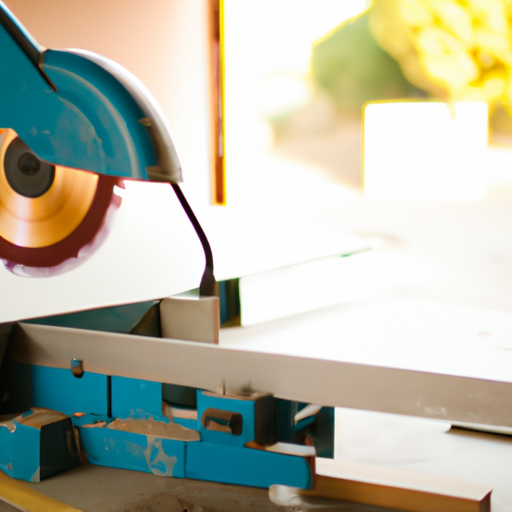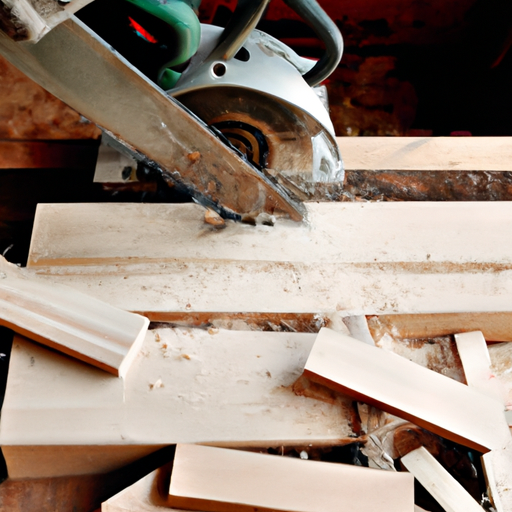In this article, we will discuss the important safety precautions you should consider when engaging in woodworking activities. You will learn about the proper use of personal protective equipment, such as goggles and gloves, as well as the importance of maintaining a clean and organized workspace. We will also address the safe handling of woodworking tools and the importance of understanding their proper usage to avoid accidents. By the end of this article, you will have a clear understanding of the safety measures necessary to ensure a secure woodworking experience. Woodworking can be a fulfilling and enjoyable hobby, but it is important to prioritize safety while engaging in this craft. Whether you are a beginner or an experienced woodworker, taking the necessary precautions can help prevent accidents and ensure a safe working environment. In this article, we will discuss some of the key safety measures you should take while woodworking.
Choosing the Right Personal Protective Equipment (PPE)
The first step in ensuring your safety while woodworking is to wear the appropriate personal protective equipment (PPE). This includes items such as safety glasses, ear protection, and respiratory protection.
Determining the Necessary PPE for Woodworking
When it comes to woodworking, there are specific hazards that you need to protect yourself from. Eye and ear protection are essential, as flying wood chips and loud machinery can cause serious injury. Additionally, respiratory protection is crucial to safeguard against wood dust and harmful fumes. Be sure to select PPE that is suitable for woodworking and meets safety standards.
Understanding the Importance of Eye and Ear Protection
Woodworking involves using various tools and machinery that can create flying debris and noise. Wearing safety glasses or goggles can shield your eyes from wood chips, dust, and other particles. Similarly, using ear protection, such as earmuffs or earplugs, can help prevent hearing damage caused by loud machinery and power tools.
Selecting the Appropriate Respiratory Protection
Wood dust poses a significant health risk, particularly if it is inhaled over a prolonged period. Wearing a respirator or dust mask specifically designed for woodworking can help filter out particles and protect your lungs. Ensure that the respiratory protection you choose provides adequate filtration and fits securely for optimal protection.
Setting up a Safe Workshop
Once you have the necessary protective equipment, it is crucial to create a safe and organized workspace.
Organizing and Maintaining a Clean Workspace
A clutter-free and well-organized workshop reduces the risk of accidents and injuries. Make sure to keep your work area tidy by storing tools and materials in designated areas when not in use. Remove waste and debris regularly to maintain a clean and safe environment.
Ensuring Sufficient Lighting and Ventilation
Good lighting is essential for safe woodworking. Properly illuminating your workspace helps you see potential hazards and work with precision. Additionally, ensure that your workshop has proper ventilation to control dust, fumes, and any other airborne particles that may be produced while working.
Proper Handling and Storage of Tools and Materials
Safe storage and handling of tools and materials can help prevent injuries and damage. Store sharp tools in a secure and accessible location, such as a locked cabinet or designated tool rack, to avoid accidental cuts or injuries. When working with wood, ensure that it is properly supported and secured to prevent it from moving or slipping during cutting or shaping.

Understanding and Minimizing Woodworking Hazards
Woodworking involves working with different types of wood, each posing its own unique hazards. It is crucial to understand these hazards and take appropriate precautions.
Identifying and Handling Different Types of Wood
Different types of wood can have varying levels of toxicity, allergic reactions, and flammability. Familiarize yourself with the properties of the wood you are working with and take necessary safety measures. For example, some woods may require additional respiratory protection or specialized handling techniques.
Reducing the Risk of Flammable and Toxic Substances
Many woodworking projects involve the use of glues, finishes, and solvents, which can be flammable or toxic. To reduce the risk of fire or chemical accidents, store these substances in properly ventilated areas away from heat sources. Follow the manufacturer’s instructions for safe handling and disposal.
Avoiding Injury from Moving Parts and Machinery
Woodworking machinery, such as table saws and routers, have moving parts that can cause serious injuries if mishandled. Take the time to familiarize yourself with the proper operation of each machine and use the appropriate guards and safety features. Keep hands and fingers away from moving parts and make sure the machinery is properly maintained and inspected regularly.
Safe Handling and Use of Hand Tools
Hand tools are indispensable in woodworking, and using them correctly and safely is crucial to prevent accidents.
Using Hand Tools Correctly and Safely
Ensure that you have a firm grip on the tool and maintain good control while using it. Keep your fingers away from the cutting edge and use proper techniques to avoid slips or unintentional contact. If a hand tool becomes dull or damaged, sharpen or replace it to maintain its effectiveness and reduce the risk of injury.
Maintaining and Sharpening Hand Tools
Regular maintenance and sharpening of hand tools are vital for optimal performance and safety. Dull tools can lead to accidents as they may require more force to use, increasing the likelihood of slips or mishaps. Keep your tools sharp and in good condition to ensure they work efficiently and safely.
Securing and Anchoring Workpieces to Prevent Slippage
When working with hand tools, it is crucial to secure your workpiece properly. Unsecured wood can shift or slip during cutting or shaping, leading to injuries. Use clamps, vises, or other appropriate methods to hold your workpiece securely in place, minimizing the risk of accidents.

Safely Operating Power Tools
Power tools can simplify and speed up woodworking projects, but they also require caution and adherence to safety guidelines.
Understanding and Following Manufacturer Guidelines
Each power tool comes with specific instructions and safety guidelines provided by the manufacturer. Familiarize yourself with these guidelines before operating any power tool and always follow them to ensure safe and proper use. This includes knowing the correct techniques for handling and maintaining the tool.
Using Appropriate Guards and Safety Features
Power tools often come with built-in guards and safety features designed to protect the user. Do not remove or disable these safety mechanisms as they provide added protection while operating the tool. Always ensure that guards are in place and functioning correctly before using a power tool.
Safe Handling of Power Cords and Avoiding Electrical Hazards
When using power tools, it is crucial to handle their cords carefully to prevent accidents. Ensure that cords are undamaged and properly grounded. Avoid placing cords in areas where they can be tripped over or pinched. Additionally, be cautious of electrical hazards and avoid working with power tools in wet environments.
Protecting Against Wood Dust and Fumes
Woodworking generates wood dust, which can pose respiratory risks if not properly managed. Additionally, certain finishes and chemicals used in woodworking projects can emit harmful fumes or vapors. Taking precautions to minimize exposure is crucial.
Implementing Dust Collection Systems
Installing a dust collection system in your workshop helps minimize airborne wood dust. A dust collection system captures and filters wood dust, reducing the amount that is inhaled or settles on surfaces. Ensure that your dust collection system is properly maintained and the filters are regularly cleaned or replaced.
Wearing Respiratory Protection for Wood Dust
In addition to dust collection systems, wearing respiratory protection is vital to combat wood dust inhalation. A respirator or dust mask specifically designed for woodworking helps filter out small particles and protect your lungs. Always wear respiratory protection when working in areas with high levels of wood dust.
Preventing Exposure to Harmful Fumes and Vapors
Some woodworking projects require the use of finishes, adhesives, or solvents that may emit harmful fumes or vapors. Using these substances in a well-ventilated area or wearing a respirator with appropriate cartridges can help reduce exposure to these chemicals. Follow the manufacturer’s guidelines for safe use and disposal.

Preventing Fire and Chemical Accidents
Woodworking involves the use of flammable materials and chemicals, making fire safety a crucial aspect of shop safety.
Storing Flammable Liquids in Properly Ventilated Areas
If you use flammable liquids, such as stains or solvents, in your woodworking projects, store them in a well-ventilated area away from heat sources or flames. Use approved containers and keep them tightly sealed when not in use. Proper storage reduces the risk of accidents and minimizes the potential for fire.
Understanding Fire Extinguishers and Emergency Response
Every woodworking workshop should have the appropriate fire extinguishers readily accessible. Learn how to use fire extinguishers effectively and familiarize yourself with the emergency procedures for your workspace. Regularly check the condition of fire extinguishers and replace or refill them as needed.
Using Chemicals and Finishes Safely and Properly
When working with chemicals or finishes, it is crucial to follow safety guidelines provided by the manufacturer. Use the appropriate protective equipment, such as gloves or goggles, when handling chemicals. Work in a well-ventilated area and dispose of hazardous materials according to local regulations.
Safe Handling of Woodworking Machinery
Woodworking machinery can be highly efficient, but it is essential to handle and maintain them correctly to ensure a safe working environment.
Proper Training and Familiarization with Machinery
Before using any woodworking machinery, ensure that you receive proper training on its operation and safety protocols. Familiarize yourself with the machine’s features and controls, and understand how to respond in case of an emergency. Never operate machinery you are not trained or comfortable using.
Regular Maintenance and Inspection of Machines
Perform regular maintenance on your woodworking machinery to prevent malfunctions and accidents. Lubricate moving parts, tighten loose screws, and replace worn or damaged components promptly. Inspecting your machines regularly will help identify any potential issues and address them before they become hazardous.
Clearing Debris and Maintaining a Safe Working Area
Debris and waste generated by woodworking can accumulate and create hazards. Regularly clear your work area of sawdust, wood scraps, and other clutter. This will not only reduce the risk of accidents but also help maintain a safe and efficient working environment.

Developing Safe Work Practices and Habits
Adopting safe work practices and habits is essential for both novice and experienced woodworkers.
Establishing a Safety Awareness Culture in the Workshop
Create a culture of safety in your workshop by educating yourself and others about woodworking hazards and best practices. Encourage open communication about safety, and make safety a priority in all aspects of your woodworking projects. Regularly review and update safety protocols to ensure they remain effective.
Proper Body Mechanics and Lifting Techniques
Woodworking often involves lifting heavy materials and equipment. Proper body mechanics and lifting techniques can help prevent strains and injuries. Bend at your knees, not your waist, when lifting heavy objects, and use your leg muscles to power the movement. Additionally, take breaks as needed to avoid overexertion.
Taking Breaks and Avoiding Fatigue
Woodworking can be physically demanding, especially during long hours of work. Take regular breaks to rest and stretch your body to prevent fatigue. Fatigue can impair your judgment and reaction time, increasing the risk of accidents. Listen to your body and prioritize your well-being.
Conclusion
Woodworking is a rewarding and creative activity, but it is essential to prioritize safety throughout your projects. By following the safety precautions outlined in this article, you can ensure a safe and enjoyable woodworking experience. Remember to continuously educate yourself about safety practices, update your knowledge, and promote a culture of safety in your workshop. By doing so, you can minimize the risk of accidents and injuries while pursuing your woodworking passion.






